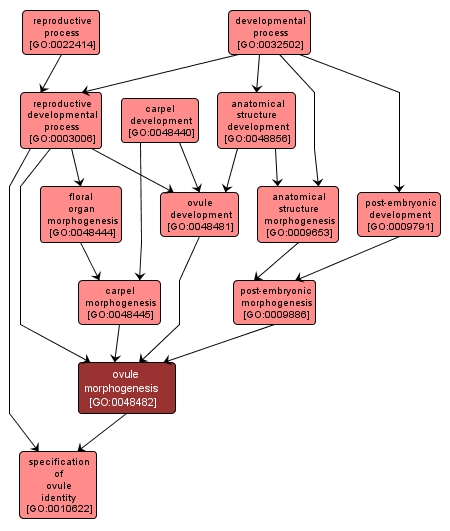| Desc: |
The process by which the anatomical structures of the ovule are generated and organized. Morphogenesis pertains to the creation of form. The ovule is the structure in seed plants enclosing the female gametophyte, and is composed of the nucellus, one or two integuments, and the funiculus; it develops into the seed. |














